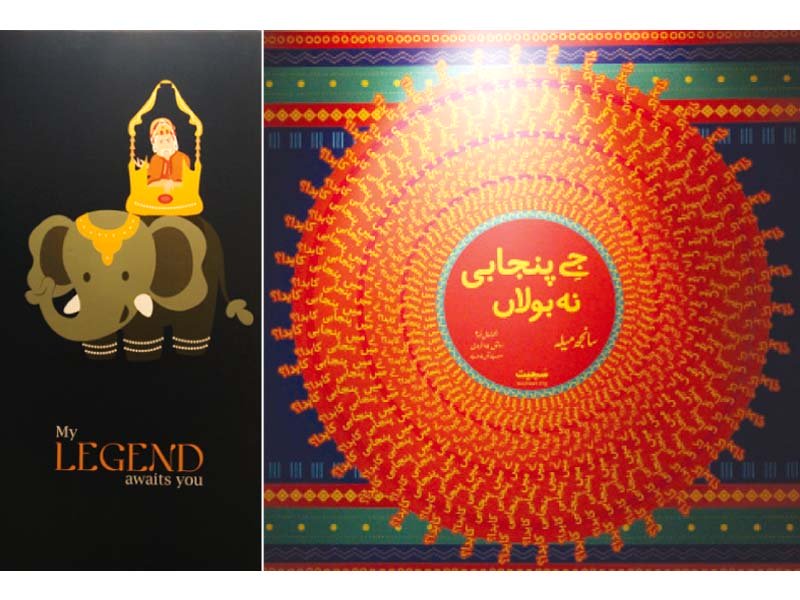
The work of 41 visual and communication design students from the National College of Arts (NCA) is being showcased at the department’s thesis show.
“One feels a disconnect when visiting historical sites,” student Mariam Jaija told The Express Tribune. Jaija, whos thesis was a publicity campaign for the Lahore Fort, said most visitors failed to connect with the fact that royalty used to once dwell there. “For instance, it is difficult for one walking on the elephant trail to visualise that this path was once actually treaded upon by elephants,” she said.
Jaija used this information extensively in her posters, saying this would make it easier for visitors to connect with the site. The other motifs employed by her were inspired by the fort’s picture wall. Jaija has used the same colour palette and symbols to create a visual connection.
Student Abdul Basit’s thesis was premised on promoting Punjabi. “A cosmopolitan place like the NCA made me conscious of my Punjabi heritage,” he said. Basit said this was so as he had realised that while everyone else knew their mother tongues he was always at a loss when it came to Punjabi language and literature.
His work was inspired by the truck art and textile peculiar to the Punjab. Basit’s posters were premised on the idea of an event being convened to celebrate Punjabi. Other material, including a booklet, contained information regarding the history of the language. “Speaking Punjabi is only looked down on in Pakistan. It is widely spoken across other places,” he said.
Basit’s thesis also shed light on legends like Bulleh Shah and Baba Farid. “Farid has a formidable body of work in Persian but it is Punjabi that has rendered him immortal,” he said.
Another student Talha Sajjad also derived inspiration from his Punjabi heritage. Sajjad, who has presented Waris Shah’s Heer, with a contemporary twist, used an English translation of the work with modern illustrations. He said he had elected to work with Heer as the tale had remained in vogue for 700 years. Shah’s narration of the story became popular around four centuries ago,” Sajjad said.
Student Ahmed Tariq’s work was based on his own hearing disability.
He said the physically disadvantaged often had to confront great hardship in the society. “People should put in place a support structure for them instead of marginalising them,” Tariq said. He said it was differences, such as disabilities, that added colour to the society. Tariq portrayed this by affixing coloured strips of paper to a white background. Another piece of his was a layered box that featured a sentence broken into parts. “It depicts the difficulty of speaking. How words start falling apart when one starts talking,” he said.
Published in The Express Tribune, January 13th, 2016.

1725783822-0/Tribune-Pic-(15)1725783822-0-165x106.webp)















COMMENTS (1)
Comments are moderated and generally will be posted if they are on-topic and not abusive.
For more information, please see our Comments FAQ